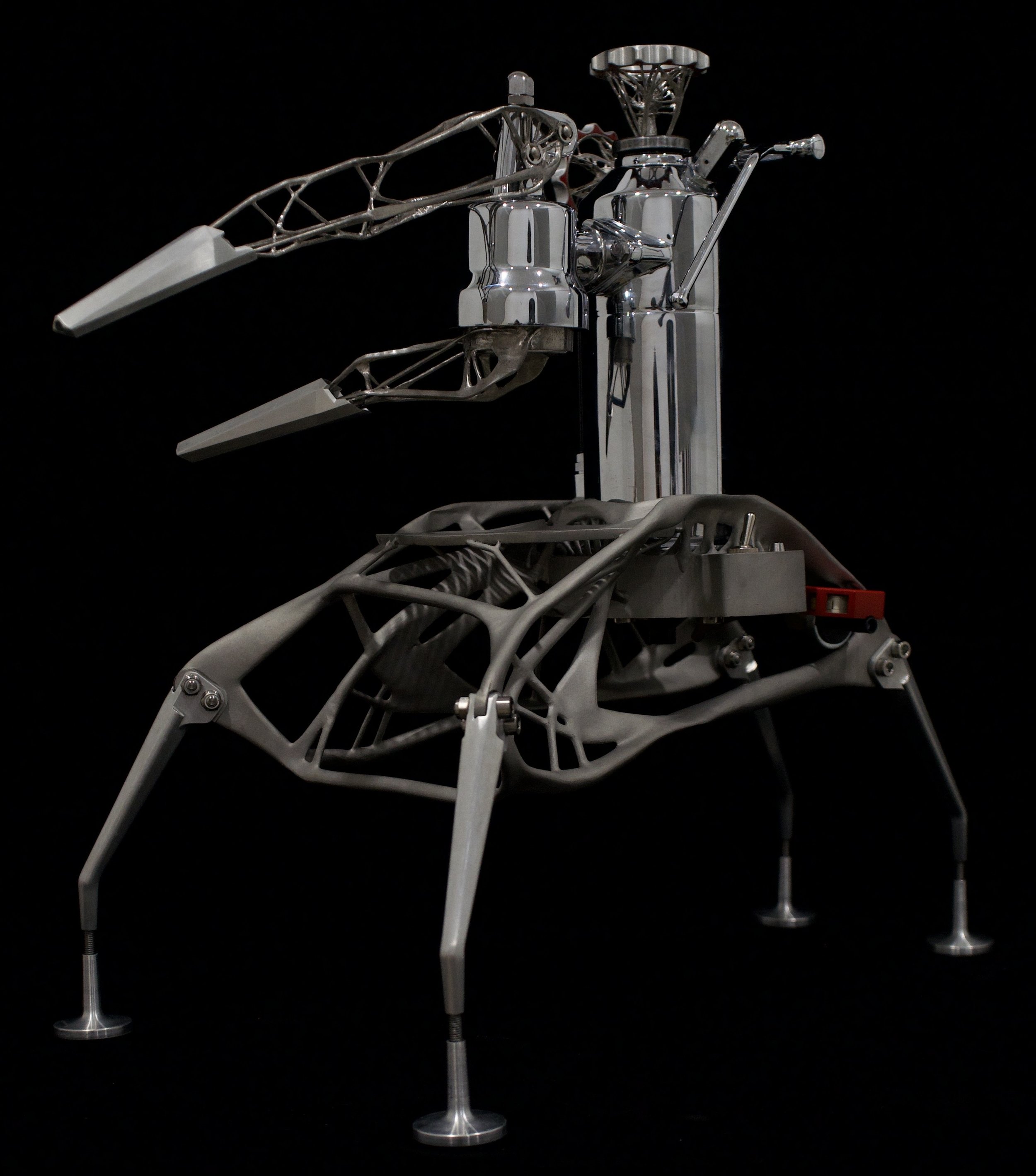Gene is the world’s first espresso machine to utilise generative design, challenging and redefining the traditional lever espresso machine.
By combining metal 3D printing with algorithm-driven design, Gene explores the future of manufacturing and its impact on home appliances. The design enhances structural efficiency, optimises material use, and integrates dynamic aesthetics inspired by nature, giving it a futuristic identity.
-
The terms “finite” and “infinite” are relative, depending on the design objective. Traditional design relies on human brainstorming, sketches, and decisions, while CAD is limited by human thought patterns, expression, and computing constraints, often reducing computers to mere executors. However, true collaboration between designers and computers could emerge by programming constraints — defining “obstacles” rather than direct commands — unlocking greater possibilities and optimising outcomes closer to the performance envelope.
-
The core of generative design lies in production methods and materials, with solutions shaped by constraints. In 3D metal printing, two key restrictions exist: the material is metal, and the production method is additive. Interestingly, designers can leverage the space between software and hardware, controlling numerous variables to express their creative and functional values.
-
Sivam Krish redefines generative design as:
“A way of translating computational energy into creative energy.”
My response so far:
“Generative design is the process where designers predefine goals, establish connections (reserve modules), and set constraints. The outcomes are then shaped by manufacturing methods, materials, forces, and other limitations, ultimately generating a series of results.”
The Analysis of La Pavoni
Originally quoted from LaPavoni's official introduction to Europiccola, it was designed in 1950 to reflect the piece of the history of Italian design. This classic lever machine is constantly evolving. So what can we bring to this classic coffee machine?
Generative design plays a role of connecting different contacts in the entire design process, so the parts need to be retained should be measured and analysis from the size to material & weight. I used a tension meter to measure.
Inspiration
Gene was inspired by my passion for coffee and the timeless craftsmanship of lever machines. Their tactile, hands-on brewing experience contrasts with modern automation, making them uniquely engaging. I sought to merge this classic interaction with metal 3D printing and generative design, reimagining their form, function, and efficiency. The result is a machine that enhances structural integrity, optimizes material use, and introduces organic aesthetics, blending tradition with innovation.
Experiment
The primary goals of generative design are to enhance structural efficiency, create organic aesthetics, and improve user experience. I plan to test this approach on the lever, portafilter, and knob components, each addressing different design aspects. First, I’ll establish contact points (Retain Geometry) between two parts: one interfacing with the hand and the other with the pin, considering their angles and distances. Next, I’ll define obstacle geometries based on these principles, taking into account the motion paths of active structures like the lever. This approach involves transitioning from 3D to 4D thinking, resulting in circular obstacle geometries around the pin axis. Unlike the lever and portafilter, the knob’s design emphasizes a unique, organic form, envisioned as a centrally symmetrical, wheel-like shape.
Interaction
Gene operates like a traditional espresso machine but features enhanced usability and performance due to its generative design. The 3d printed components optimise thermal management and structural integrity, improving coffee extraction. Its refined ergonomics ensure intuitive operation, while the seamless integration of advanced manufacturing elevates the interaction, making every use efficient and satisfying.
Manifestation
Gene leverages generative design algorithms to optimise the structure and material efficiency of the La Pavoni Europiccola espresso machine, utilising Fusion 360 software. Production methods include selective laser melting 3d printing for the main body, made from Ti-6Al-4V material, followed by sandblasting. The handle and legs are cnc-machined from aluminium and polished, while the boiler and brewing head retain La Pavoni’s original factory components.
A' Design Award Winner 2025
in Architecture, Building and Structure Design Category














